#Nodejs Introduction
Explore tagged Tumblr posts
Text
Mastering Node.js Events with WebTutor: Unleash the Power of Event-Driven Development
Node.js, known for its event-driven architecture, has transformed the way we build scalable and responsive web applications. Understanding Node.js events is pivotal for any web developer looking to harness this power. In this blog, we will delve into the significance of Node.js events and how WebTutor can be your guiding star in mastering them.
Node.js Events: The Heartbeat of Event-Driven Development
Node.js is built around an event-driven, non-blocking I/O model. Events are at the core of this architecture, allowing your applications to respond to various actions and conditions asynchronously. Here's why grasping Node.js events is essential:
Responsive Applications: Event-driven development enables your applications to respond quickly to user interactions, making them highly responsive and user-friendly.
Scalability: Node.js' event loop can handle thousands of concurrent connections efficiently, making it suitable for building scalable applications.
Modularity: Events encourage modularity, making it easier to organize your code and add new features as your application grows.
Real-Time Features: Events are ideal for implementing real-time features like chat applications, live notifications, and online gaming.
WebTutor: Your Gateway to Event-Driven Mastery
WebTutor is your trusted companion on the journey to becoming an event-driven development expert with Node.js. Here's why it's the perfect platform for mastering Node.js events:
Comprehensive Event-Based Courses: WebTutor offers a wide range of Node.js event-based courses, catering to beginners and experienced developers alike. Whether you're starting from scratch or diving into advanced topics, there's a course for you.
Hands-On Learning: WebTutor believes in practical learning. Their courses are filled with interactive exercises and projects that allow you to apply your knowledge in real-world scenarios.
Expert Instructors: The platform features instructors who are Node.js experts with a passion for teaching. They provide valuable insights, tips, and guidance to help you become proficient in Node.js events.
Flexible Learning: WebTutor's flexible course structure accommodates your schedule, whether you have a full-time job or other commitments. Learn at your own pace and convenience.
Certification: Upon completing a course, WebTutor offers certification, validating your Node.js event-driven development skills and enhancing your career prospects.
Community Support: WebTutor fosters an active online community where you can connect with fellow learners, share experiences, and seek assistance when needed.
Read more: An Introduction To Node.js: Server Side JavaScript
Conclusion
Node.js events are the backbone of event-driven development, a critical paradigm in modern web application development. By mastering Node.js events, you'll be equipped to build applications that are not only highly responsive but also scalable and modular.
Don't miss out on the opportunity to become an event-driven development expert. Embark on your journey with WebTutor today, and let it guide you toward unlocking the full potential of Node.js events. Your future in web development is bright, and WebTutor is here to illuminate the path!
Learn More
Learn online NodeJS Installation
Learn Online NodeJS Https Module
Learn online NodeJS Express.JS
#Learn Online Nodejs#Online Nodejs Tutorial#Introduction to Nodejs#Nodejs tutorials#Learn Nodejs online#Nodejs Introduction#Node.js Events#Learn Node.js Events#Online Node.js Events#Understanding Node.js events#Node.js Events Tutorial#Web Tutor#Webtutor
0 notes
Text
2 notes
·
View notes
Text
You can learn NodeJS easily, Here's all you need:
1.Introduction to Node.js
• JavaScript Runtime for Server-Side Development
• Non-Blocking I/0
2.Setting Up Node.js
• Installing Node.js and NPM
• Package.json Configuration
• Node Version Manager (NVM)
3.Node.js Modules
• CommonJS Modules (require, module.exports)
• ES6 Modules (import, export)
• Built-in Modules (e.g., fs, http, events)
4.Core Concepts
• Event Loop
• Callbacks and Asynchronous Programming
• Streams and Buffers
5.Core Modules
• fs (File Svstem)
• http and https (HTTP Modules)
• events (Event Emitter)
• util (Utilities)
• os (Operating System)
• path (Path Module)
6.NPM (Node Package Manager)
• Installing Packages
• Creating and Managing package.json
• Semantic Versioning
• NPM Scripts
7.Asynchronous Programming in Node.js
• Callbacks
• Promises
• Async/Await
• Error-First Callbacks
8.Express.js Framework
• Routing
• Middleware
• Templating Engines (Pug, EJS)
• RESTful APIs
• Error Handling Middleware
9.Working with Databases
• Connecting to Databases (MongoDB, MySQL)
• Mongoose (for MongoDB)
• Sequelize (for MySQL)
• Database Migrations and Seeders
10.Authentication and Authorization
• JSON Web Tokens (JWT)
• Passport.js Middleware
• OAuth and OAuth2
11.Security
• Helmet.js (Security Middleware)
• Input Validation and Sanitization
• Secure Headers
• Cross-Origin Resource Sharing (CORS)
12.Testing and Debugging
• Unit Testing (Mocha, Chai)
• Debugging Tools (Node Inspector)
• Load Testing (Artillery, Apache Bench)
13.API Documentation
• Swagger
• API Blueprint
• Postman Documentation
14.Real-Time Applications
• WebSockets (Socket.io)
• Server-Sent Events (SSE)
• WebRTC for Video Calls
15.Performance Optimization
• Caching Strategies (in-memory, Redis)
• Load Balancing (Nginx, HAProxy)
• Profiling and Optimization Tools (Node Clinic, New Relic)
16.Deployment and Hosting
• Deploying Node.js Apps (PM2, Forever)
• Hosting Platforms (AWS, Heroku, DigitalOcean)
• Continuous Integration and Deployment-(Jenkins, Travis CI)
17.RESTful API Design
• Best Practices
• API Versioning
• HATEOAS (Hypermedia as the Engine-of Application State)
18.Middleware and Custom Modules
• Creating Custom Middleware
• Organizing Code into Modules
• Publish and Use Private NPM Packages
19.Logging
• Winston Logger
• Morgan Middleware
• Log Rotation Strategies
20.Streaming and Buffers
• Readable and Writable Streams
• Buffers
• Transform Streams
21.Error Handling and Monitoring
• Sentry and Error Tracking
• Health Checks and Monitoring Endpoints
22.Microservices Architecture
• Principles of Microservices
• Communication Patterns (REST, gRPC)
• Service Discovery and Load Balancing in Microservices
1 note
·
View note
Text
100daysofcode #day001
The npm advantage
As a developer you need all the api's that are available so that you don't have to reinvent the wheel. There is no point in that, npm allows you to reuse code that someone has made into a lib-utility. I call it a lib utility because it's normally a full set of programming api that enables you to achieve a purpose by making you harness the source code that actually makes your life easy. Infact under the hood react itself is a lib-utility but it's seen as a framework altogether. Most JavaScript frameworks leverage the npm system or reusing code. Frameworks like react, svelte, angular, vue.js, solidJS and quik.
Building cross-platform Apps with Electron and React
Above are most frameworks that are mainstream, I did not include nextjs, nuxtjs and preact because are a subset of mainstream frameworks. React was made as a single page application to solve a problem of server roundtrips which had performance issues. In the same way Electron was developed so that web developers that sometimes get a one of desktop application project don't have to go learn another programming language.
Npm package managers
There used to be a package manager called npm which was the native package manager and its very good. Since everyone is on the mission to solve problem, there has been an introduction of yarn and pnpm which is the latest. Pnpm came out in 2022 and its awesome, I will not go into the improvements made in yarn and pnpm but I will say node package manager(npm) is the tooling you need to use to install all you npm into your projects. After you install NodeJS, the base tool you need to develop JavaScript, It has prebuilt api's that allows you to access the filesystem, scientific and arithmetic base and console tools. These modules will be added by default in any node project along with the ones you would like to use.
youtube
#studyblr#codeblr#electronjs#typescript#100daysofcode#youtube#codetrain Gen20#codetrian-alumni#programming#coding#javascript#web development#linux#open source#cross platform apps#stackoverflow#Youtube#react#LSP
0 notes
Text
Looking for a good book on Angular.js? This is a book we liked and exclusively covering its review on our website.Pro AngularJS(By: Adam Freeman )Also known as Angular or Angular.js, AngularJS is a leading open-source web application framework that is used primarily for building dynamic JavaScript single-page applications.With increasing popularity of the framework, it has become necessary to understand the salient features for programming any software. Written by Adam Freeman, this is one of the best books on the topic that offers comprehensive information about the Angular.js framework.The 1st part of the book offers a step-by-step process to build a real application while it offers information about various features. This section also offers an introduction to JavaScript, CSS, and HTML for beginners.The second and third part of the book offers information regarding various features and their use. Adam Freeman is an experienced IT professional, who is now retired after working in many senior positions such CEO and Chief Technology Officer at a global bank.Who Should Read This Book?As per the author, this book is primarily targeted towards web developers with functional knowledge of CSS, HTML, and JavaScript. As the books start with the introduction and building of an actual application, this book is good for readers who have set up the required environment and are ready to start building an application. This book is also a good option for the people who believe in learning with a practical demonstration about how to create dynamic and rich web apps by using AngularJS and how to customize and extend this framework. This book is also targeted towards those developers who are involved in testing, refining, and deployment of AngularJS projects in any organization.What Is Good In This Book?As per the author, this book is primarily targeted towards web developers who have some functional knowledge regarding the development of websites. This book starts with the steps for building an online application, specifically an online sports store; however, the web developer can start building an online application similar to a sports store and include various features as required. The other parts of the book take up these features again one by one and explain their use with suitable examples. In this way, the book offers both practical and theoretical knowledge of AngularJS for readers.The author starts with MVC pattern concepts and its benefits with separation of presentation code, data, and logic. He further shows how to use various AngularJS features for the production of professional-quality results. The author carefully unwraps the nuts-and-bolts of the software framework in order to build an actual application.The language of the book is very easy, concise and includes detailed information to avoid common problems. The building of an actual application enhances the confidence of the learner and increases his or her thirst to know more. The author fulfills this desire by taking up every feature topic by topic, in other sections of the book.What Is Not So Good In This BookThe author has used many pre-installed programs such as Deployd, MongoDB, and NodeJS while describing the process of creating a new application. However, the Deployd environment is defunct in the software world today.The author mentions this fact but does not give an alternative. In most cases, the student is unable to install or run Deployd environment or it takes a lot of time. Also, most other software books define various features of the software first, and then they go on to build an application. However, this book reverses the order. Some people who like to learn in a sequential manner way do not appreciate this method.Although this book does not use a conventional method to teach AngularJS to readers, it uses an innovative and effective method to teach this software framework. AngularJS is one of the upcoming open-source web applications much in demand in the software world.
For the web developer who has functional knowledge of web designing languages such as CSS and HTML, this is one of the ideal books to buy, for developing dynamic web applications.
0 notes
Text
Creating and Configuring Production ROSA Clusters (CS220)
Introduction
Red Hat OpenShift Service on AWS (ROSA) provides a seamless way to deploy and manage Kubernetes workloads in the cloud. As organizations increasingly adopt cloud-native solutions, mastering the creation and configuration of production-grade ROSA clusters is essential. This guide walks you through the process of setting up a ROSA cluster efficiently and securely.
Prerequisites
Before creating a ROSA cluster, ensure you have the following:
A valid AWS account with necessary permissions.
Red Hat OpenShift subscription.
AWS CLI and ROSA CLI installed on your local machine.
An understanding of IAM roles and policies for ROSA.
Step 1: Configuring AWS and ROSA CLI
Start by authenticating with AWS and setting up ROSA CLI:
aws configure
rosa login
Ensure that your AWS account has the necessary permissions to create ROSA clusters.
Step 2: Enabling ROSA and Setting Up AWS IAM Roles
Run the following command to enable ROSA in your AWS account:
rosa enable-ocm
Create the necessary IAM roles:
rosa create account-roles --mode auto --yes
This step ensures ROSA has the required permissions to manage cluster resources.
Step 3: Creating a ROSA Cluster
To create a new production-ready ROSA cluster, execute:
rosa create cluster --cluster-name my-rosa-cluster --region us-east-1 --multi-az --sts --yes
--multi-az: Deploys across multiple availability zones for high availability.
--sts: Uses AWS Security Token Service (STS) for secure authentication.
Monitor the cluster creation process:
rosa describe cluster --cluster my-rosa-cluster
Step 4: Configuring Your ROSA Cluster
Once the cluster is up, retrieve credentials:
rosa create admin --cluster my-rosa-cluster
Login to the OpenShift Web Console:
oc login https://api.my-rosa-cluster.openshiftapps.com:6443 -u <username> -p <password>
Step 5: Deploying Applications
Deploy a sample application to verify the setup:
oc new-app nodejs~https://github.com/sclorg/nodejs-ex.git --name=my-app
oc expose svc/my-app
Check the status of the deployment:
oc get routes
Step 6: Scaling and Managing Your Cluster
Scale workloads based on demand:
oc scale deployment my-app --replicas=3
Monitor cluster health:
oc get nodes
oc get pods -A
Step 7: Securing Your ROSA Cluster
Implement security best practices:
Enable Role-Based Access Control (RBAC) to manage user permissions.
Use OpenShift Service Mesh for secure service-to-service communication.
Set up Network Policies to restrict traffic between workloads.
Conclusion
Setting up a production-ready ROSA cluster requires careful planning and configuration. By following these steps, you can deploy a scalable, secure, and highly available Kubernetes environment on AWS. Mastering ROSA ensures you can leverage the power of OpenShift in a cloud-native ecosystem, optimizing performance and operational efficiency.
For more details www.hawkstack.com
0 notes
Text
Unit Testing | Mocha Chai | NodeJs and TypeScript Tutorial - Configuration - Hooks -Syp Stub Mock - API Mock - Code Coverage Testing Made Easy!😀










0 notes
Text
Angular for Kids: Start Your Coding Adventure
by Abdelfattah Ragab
Introduction
Welcome to the book “Angular for Kids: Start your Coding Adventure”.
This book is your introduction to the world of Angular. It's your first step towards developing websites and mobile applications. With Angular, you can turn your ideas into reality. Learning should be fun, so you will feel like you are reading a story.
By the end of this book, you will have a good understanding of Angular. You will have taken the first steps in your modern web programming adventure.
Have fun programming!
Move forward
When you start a new topic, you should explore it broadly and focus on moving forward without getting lost in the details. I also recommend that you gather information on the same topic from different sources.
Take breaks from time to time, look for short answers to questions, and use different sources to get different perspectives. Don´t worry if you still don't understand after many attempts, just keep going because you will come across it again later.
What is Angular?
Angular is a platform for the development of web applications. It is maintained by Google and is designed to help developers create robust applications.
What are web applications?
A web application is a type of application software that is accessed via a web browser. It is delivered over the World Wide Web and requires an active Internet connection to function.
Constituents of a Web Application
A web application consists of two parts that work together to provide functionality and a seamless user experience.
There is a client-side part of the application that runs in the user’s browser. It processes user interactions, dynamically updates the user interface and communicates with the server to retrieve or send data.
The other part is the server side. It performs operations such as data retrieval or manipulation and sends responses back to the client.
Angular belongs to the first part. It is a client-side framework.
We use Angular to create the user interface and to communicate with the server.
HTML, CSS and JavaScript
Engineers like to separate topics to have more control over each one. The web page you visit is made up of three technologies that together make up the final result we see when we open a web page online; HTML, CSS and JavaScript.
HTML defines the content of the page. It determines what should be in the header, main content, footer, etc.
The second technology is CSS. It is responsible for the styling of the page. It determines the font size, the color and so on.
The last technology is JavaScript. It allows you to interact with the page to trigger events, execute logic and so on.
When you create an Angular component, three files are created for all these technologies. One for the HTML, one for the CSS and one for the TypeScript (similar to JavaScript).
A fourth file is created for testing, but this is optional and is not needed in most cases.
What is TypeScript?
TypeScript is a programming language developed by Microsoft to help developers detect errors during development rather than at runtime.
Before your application is sent to the browser, Angular converts everything to JavaScript. Browsers do not understand Typescript, they only understand JavaScript.
Install Angular
The installation of Angular consists of only two steps:
First, NodeJS must be installed. Search online for nodeJS, download it and install it.
Secondly, open the terminal and run the command npm install -g @angular/cli
What is NodeJS?
Node.js is a JavaScript runtime environment that allows developers to execute JavaScript code outside of a web browser. It comes with NPM, a package manager that makes it easy for developers to share and reuse code.
If a developer creates a package that I need to use in my application, I just write the name and npm installs it for me. I can use it immediately without having to develop it from scratch. This of course speeds up the development process.
What is terminal?
A terminal is a text-based interface that allows users to interact with the operating system by entering commands.
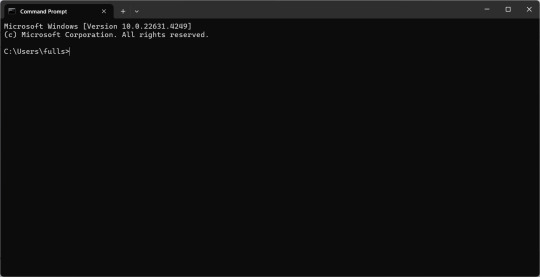
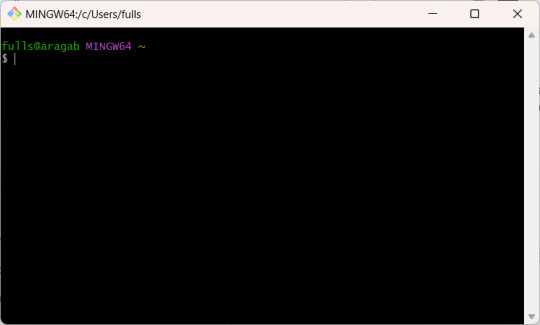
It can take many forms, but ultimately it is a text-based interface through which you can execute commands.
Windows has many terminals that you can use. There is “Windows PowerShell“, “Command Prompt” and you can also install “Git Bash”.
Mac and Linux also have the “Terminal” application.
Angular Version
To ensure that the installation was successful, you can check the current node version. Open the terminal and execute the command node -v. The version of NodeJS installed should be displayed.
Also check the installed version of npm. Execute the command npm -v
This is the version of npm.
The last version to check is the version of Angular.
Execute the command ng version
Visual Studio Code
Visual Studio Code (VS Code) is a free code editor developed by Microsoft for creating modern web applications.
Search online for Visual Studio Code, download and install it.
First Angular Application
To create a new Angular application, open the terminal and run the command ng new followed by your project name. For example:
ng new first-app
You will be asked for the stylesheet format and whether you want to activate SSR. Simply press the Enter key.
The project will be created in the current folder. In Windows, you can type “cmd” in the address bar and press Enter to open the terminal in the current folder. If you now execute the command ng new first-app, a new Angular application is created in the currently open folder.
Available on https://shop.tredition.com and https://www.amazon.com
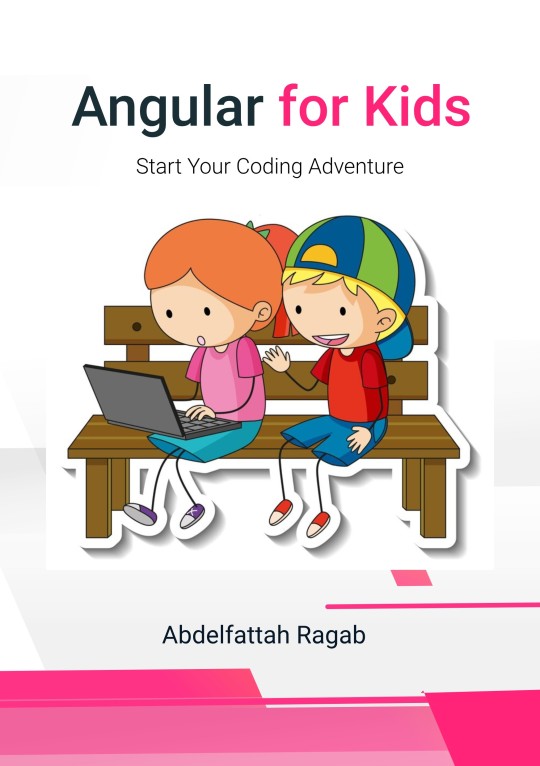
0 notes
Text
Discover the exciting future of #Nodejs! In this blog post, we explore the latest trends, upcoming features, and why Node.js is set to dominate web development for years to come. From performance boosts to enhanced scalability, find out how Node.js is evolving and what it means for developers. Don’t miss out on the future of one of the most powerful #JavaScript frameworks!
0 notes
Text
Comprehensive Software Development Services | Quriosoft
Introduction to Expert Software Development
In today's digital-driven world, businesses thrive on customized software solutions tailored to meet specific needs. Quriosoft stands out as a pioneer in delivering cutting-edge software development services. From conceptualizing innovative applications to delivering scalable enterprise solutions, our team ensures excellence at every stage.
Why Choose Quriosoft for Software Development?
1. Expertise Across Multiple Domains
Quriosoft boasts an experienced team of developers specializing in industries such as healthcare, finance, e-commerce, and more. Our proficiency spans various programming languages, frameworks, and platforms, including:
Python for AI-driven applications
Java for robust enterprise solutions
ReactJS for dynamic front-end development
NodeJS for scalable back-end systems
2. Tailored Solutions for Every Business
Generic software doesn't cut it in competitive markets. We prioritize understanding your unique challenges and delivering custom software solutions that align perfectly with your goals.
3. Agile Development Methodology
With a focus on agility, Quriosoft employs the Agile framework to ensure adaptability and swift delivery. This process involves continuous collaboration and iteration, allowing us to incorporate feedback seamlessly.
Our Range of Software Development Services
1. Custom Software Development
Every business has specific needs. Quriosoft creates bespoke software solutions to enhance productivity, streamline processes, and drive growth. Examples include:
CRM Systems to manage customer relationships
ERP Software for efficient resource planning
Workflow Automation Tools to save time and reduce costs
2. Web Application Development
Our web application development services focus on delivering responsive, feature-rich applications that engage users. Technologies we leverage include:
HTML5, CSS3, and JavaScript for clean, user-friendly designs
Angular and Vue.js for dynamic user interfaces
MongoDB and MySQL for robust database management
3. Mobile App Development
With the mobile-first approach dominating the market, Quriosoft creates high-performance mobile applications for iOS, Android, and cross-platform environments. Key features include:
Intuitive User Interfaces
Seamless Integration with existing systems
Optimized Performance for diverse devices
4. Software Maintenance and Support
Beyond development, we provide ongoing software maintenance and support services to ensure your systems run smoothly. Our team resolves bugs, performs updates, and optimizes performance to keep your operations uninterrupted.
5. Cloud-Based Solutions
Cloud technology is integral to modern software. Quriosoft specializes in developing cloud-based software that enhances flexibility, scalability, and security. We work with platforms like:
AWS
Microsoft Azure
Google Cloud
The Quriosoft Development Process
1. Discovery and Planning
We start with a comprehensive consultation to understand your goals, challenges, and expectations. This phase includes:
Requirements gathering
Feasibility analysis
Creating a detailed project roadmap
2. Design and Prototyping
Our design team develops intuitive prototypes and wireframes, ensuring user-centric solutions. Features include:
Visual mockups
Interactive elements for better usability testing
3. Development
Our developers follow best practices to write clean, scalable code. The development stage includes:
Front-end and back-end coding
Database design and integration
Regular updates and milestones
4. Quality Assurance and Testing
Rigorous testing ensures that the software performs seamlessly under all conditions. This includes:
Unit Testing for individual components
Integration Testing for system compatibility
User Acceptance Testing (UAT) to ensure client satisfaction
5. Deployment and Post-Launch Support
Once the software passes testing, we proceed with deployment. Our post-launch support ensures a smooth transition, including:
Monitoring for performance issues
Immediate resolution of bugs
Continuous updates based on user feedback
Benefits of Partnering with Quriosoft
1. Improved Efficiency
Our tailored software solutions streamline workflows, automate repetitive tasks, and enhance overall efficiency.
2. Enhanced User Experience
Through intuitive designs and robust functionality, Quriosoft ensures exceptional user satisfaction.
3. Cost Savings
Our solutions are designed to optimize resources and reduce operational costs, delivering long-term ROI.
4. Scalability
Quriosoft builds scalable systems that grow with your business, minimizing the need for future overhauls.
5. Security
With a focus on data privacy and compliance, we implement state-of-the-art security protocols to protect your systems and data.
Industries We Serve
1. Healthcare
From telemedicine apps to electronic health records (EHR) systems, Quriosoft transforms healthcare delivery.
2. Finance
We create secure and scalable solutions like trading platforms and risk management software tailored for the financial sector.
3. E-Commerce
Our team develops high-performing e-commerce platforms with features like:
Secure payment gateways
Advanced search capabilities
Personalized user experiences
4. Education
Quriosoft develops e-learning platforms, virtual classrooms, and administration tools that revolutionize education.
Conclusion
Choosing the right software development partner is crucial for business success. Quriosoft combines technical expertise, innovative design, and a client-first approach to deliver superior software solutions. Whether you're a startup or an established enterprise, Quriosoft is here to transform your vision into reality.
0 notes
Text
Mastering Node.js Modules with WebTutor: Your Path to Seamless Developmen
Node.js has revolutionized the world of web development, and understanding its modules is crucial for any aspiring developer. Node.js modules are the building blocks of a Node.js application, allowing you to organize and reuse code effectively. In this blog, we'll explore the significance of Node.js modules and how WebTutor can be your guiding light in mastering them.
Node.js Modules: The Foundation of Your Application
Node.js modules are encapsulated pieces of code that can be easily reused in various parts of your application. They promote modularity, code organization, and maintainability. Here's why understanding Node.js modules is vital:
Code Reusability: Modules enable you to write code once and use it multiple times, saving you time and effort in the long run.
Simplified Codebase: Breaking your code into smaller modules makes it easier to manage and debug, resulting in cleaner and more maintainable code.
Collaboration: Modules make it feasible for multiple developers to work on different parts of an application simultaneously without causing conflicts.
Scalability: As your application grows, modular code becomes essential. You can add new features or make changes without disrupting the entire application.
WebTutor: Your Learning Companion
WebTutor is your trusted partner in unraveling the complexities of Node.js modules. Here's why it's the ideal platform for mastering this essential aspect of Node.js development:
Comprehensive Module-Based Courses: WebTutor offers a range of Node.js module-based courses, catering to beginners and experienced developers alike. You can start from scratch or dive into advanced topics, depending on your level of expertise.
Interactive Learning: WebTutor believes in hands-on learning. Their courses are packed with practical exercises and projects that allow you to apply what you've learned in real-world scenarios.
Expert Instructors: The platform features instructors who are Node.js experts, passionate about teaching. They provide valuable insights, tips, and guidance to help you become proficient in Node.js modules.
Flexibility: WebTutor's flexible course structure allows you to learn at your own pace. Whether you have a full-time job or other commitments, you can fit your Node.js module learning into your schedule.
Certification: Upon course completion, WebTutor provides certification, validating your Node.js module expertise and enhancing your career prospects.
Community Support: WebTutor fosters a supportive online community where you can connect with fellow learners, share experiences, and seek help when needed.
Read more:An Introduction to Node.js: Server-Side JavaScript
Conclusion
Node.js modules are the bedrock of any Node.js application. By mastering them, you'll be equipped to build scalable, efficient, and maintainable applications. With WebTutor as your learning companion, this journey becomes not only accessible but also enjoyable.
Do not miss out on the opportunity to elevate your Node.js skills. Start your journey towards becoming a Node.js module expert with WebTutor today. Your future in web development is bright, and WebTutor is here to light the way!
Learn More
Learn online NodeJS Installation
Learn Online NodeJS Https Module
Learn online NodeJS Express.JS
#Learn Online Nodejs#Online Nodejs Tutorial#Introduction to Nodejs#Nodejs tutorials#Learn Nodejs online#Nodejs Introduction#Node.js Modules#Learn Node.js Modules#Online Node.js Modules#Node.js Modules Tutorial#Web Tutor#Webtutor
0 notes
Text
Freelance vs Full-Time NodeJS Developers
Node.js needs no introduction. It has become the most popular JavaScript library for building scalable, high-performing, and robust web and mobile app solutions.
Today, 50% of US websites are powered by Node.js due to its fast development capabilities. As per StackOverflow 2024 developers survey, Node.js is still at the top of the web frameworks list.
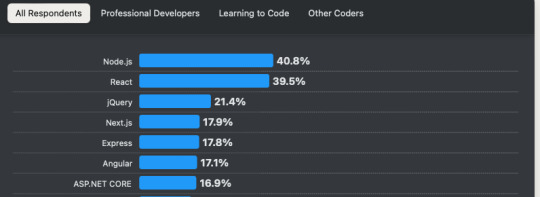
Whether you are a startup or an established business like Amazon, Netflix, LinkedIn, PayPal, or others, everyone relies on Node.js core capabilities. Its versatility is another core reason to go for Node.js. From simple API apps to complex IoT, and AL/ML, integrations, Node.js makes it all possible with its simple interface and learning curve.
It is known for
35% decrease in average response time
58% reduced development costs
50% increase in performance
What else any business could want?
Due to its undeniable and unbeatable performance, businesses are targeting Node.js developers from every corner of the world and hiring them to build the best possible application.
Node.js is an old framework with developers available easily, businesses can either go for Freelance or Full-time NodeJS developers to satisfy their unique business needs.
However, businesses find it difficult to hire a trusted developer and are mostly confused- freelance vs, full-time- about which one to go for. To help businesses like yours, we have highlighted the core factors to consider to make the decision.
Companies fearlessly using NodeJS
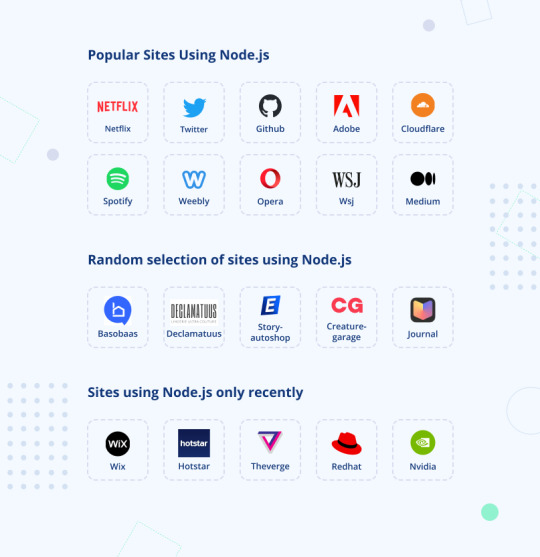
Aspects to Consider for Freelance vs. Full-time NodeJS Developers
While choosing from freelance or full-time Nodejs developers or any developer, you must keep your basics clear. You must understand the following factors and how they can impact the decision.
Project Duration
Always understand your project requirements. Make sure you know-
Is your project long-term or short-term?
If it lasts a few months or years, do you have enough resources?
Will it need regular updates and maintenance?
Or is it less than a year?
Project Details
Keep a long-term vision in your mind while evaluating your project details. Ask yourself
Do you know all the technical requirements and features?
Or do you need more guidance on the specifics?
For technical help or business analysis, you might need an agency.
Budget: What can you afford to spend?
It’s not just about “small budget = freelancer, big budget = company.” The length of the project also matters.
For a year-long project, would it be better to pay an hourly rate or hire a full-time employee?
Are there additional costs like training, taxes, insurance, or hardware?
Business Culture
While deciding whether you want freelancer or a full-time NodeJS developer, keep diversity in mind. Make sure you have seamless communication throughout the development process. Make sure to ask the following-
How do you prefer to communicate?
Two out of three options involve remote communication. Is that okay with you?
Are you open to new ideas that might change the project?
What project management tools do you prefer?
Choosing between a full-time developer, freelancer, or company depends on your goals, location, and budget. Freelancers are good for smaller or short-term tasks. Companies offer flexibility and expert guidance.
Let’s explore the difference.
Freelance Verss Full-time NodeJS Developer- What’s The Difference?
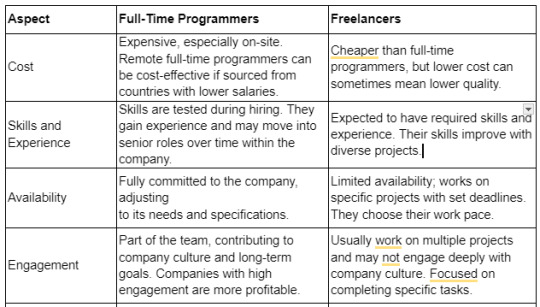
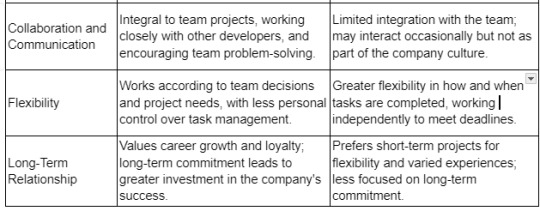
If you see, you will find a freelancer option better and cheaper, but it comes with several roadblocks for a growing business in the long run, such as
Communication gap
Quality control
Lack of commitment
Dependency risks
Freelancers are mostly independent workers who charge per hour. Below are the average node.js freelancer's hourly rates.
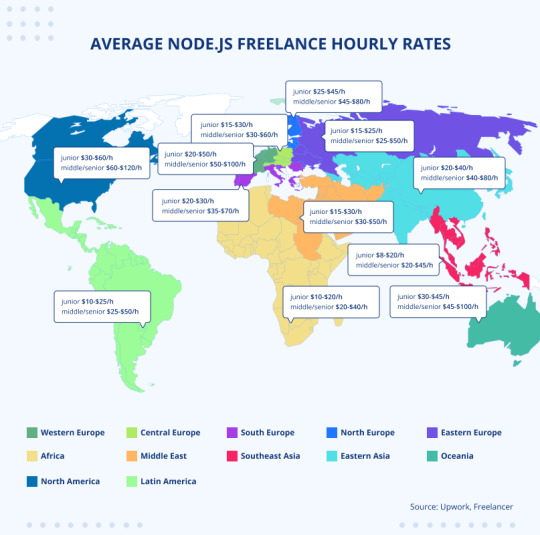
Despite the costly and a time taking process, a full-time Nodejs developer will prove to be a great asset for your development. Also, businesses can choose Offshore and Nearshore development centers for streamlined Nodejs development in their own or nearby countries.
If you choose to Hire Nodejs Developers, you must know the average hourly rates across countries.
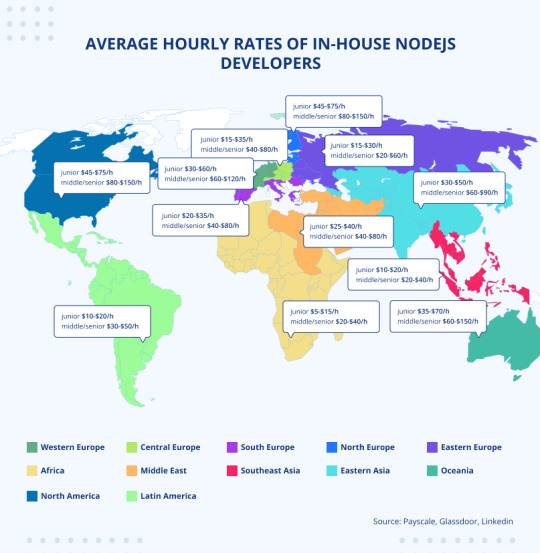
Hire Dedicated Nodejs Development Company
Contacting a dedicated nodejs development company lets you quickly hire remote experts to help your in-house team. These companies have skilled engineers who are carefully chosen. They can provide as many specialists as you need on a contract basis. Hiring dedicated developers usually costs more than freelancers but less than in-house staff. This approach is safe, cost-effective, and flexible—you only pay for the work done. The salary for NodeJS Developers depends on where they are located and their level of expertise.
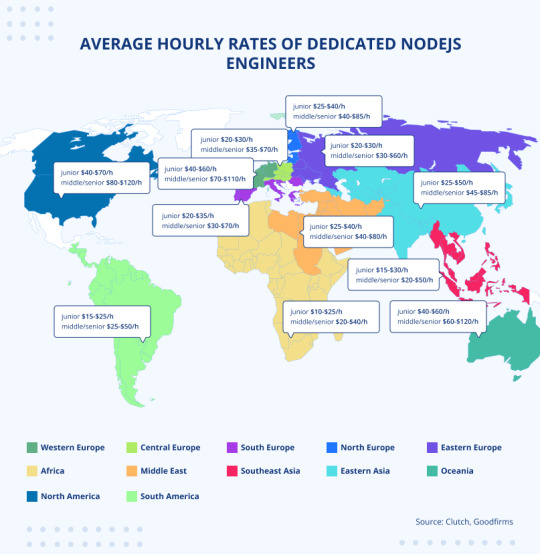
If you are looking to hire full-time dedicated Nodejs developers in the USA, UK, India, Singapore, and Malaysia like countries, OnGraph is the top choice of many brands for Nodejs developers.
Let’s explore the business benefits of hiring in-house Nodejs developers.
Benefits of In-House or Full-time Nodejs Developers Hiring
Here are some benefits of hiring full-time Nodejs developers.
Promotes Growth: Helps current employees advance in their careers, increasing job satisfaction and loyalty.
Maintains Culture: Keeps the company culture strong and consistent.
Quicker Onboarding: Existing employees know the company’s policies and systems, so they get up to speed faster.
Saves Money: Reduces costs related to recruitment, advertising, and relocation.
Faster Decisions: Internal hires understand the company’s structure, leading to quicker and smoother decisions.
Find Appropriate Node.js Developers and Save Budget with OnGraph
OnGraph is a top provider of IT staff augmentation and tech recruitment services. We aim to link businesses with top-notch Node.js experts. We’ve built a network of carefully selected senior Node.js developers who can start contributing right away. By hiring through OnGraph, you’ll benefit in many ways.
Cost-effective development
No hidden cost
Flexible and transparent hiring model
15+ years of Nodejs expertise
Equipped with the latest tools and frameworks
Upskilled regularly
Global talent pool
Also read- A Comprehensive Guide to Hire a Nodejs Developer In 2024
Final Thoughts- Freelance vs. Full-time Nodejs Developers
When choosing how to hire for your projects, consider the pros and cons of each option. Freelancers are the cheapest and work well for small projects. In-house specialists are the most expensive and best for large projects.
Remote developers, available through tech recruitment and staff services, offer a good middle option. These services help you hire skilled professionals quickly at reasonable hourly rates that fit your needs. This method lets you adjust resources based on the project's size and length.
For the best cost savings and access to top experts, choosing developers from OnGraph is a smart choice. We connect you to a global network of highly skilled professionals. Our senior developers, with rates between $45 and $50 per hour, provide great value and quality. Contact us today to find the best Node.js developers for your business!
Content Source URL: https://medium.com/@sophiasmith791/freelance-vs-full-time-nodejs-developers-2b1e3beca8a8
#HiringfreelanceNodeJSdevelopers#Full-timeNodeJSdevelopercomparison#FreelancervsemployeeNodeJSdeveloper#BenefitsoffreelanceNodeJSdevelopers#Full-timeNodeJSdeveloperadvantages#NodeJSdeveloperfreelancerates#Costoffreelancevsin-houseNodeJSdevelopers
0 notes
Text
Introduction to Node.js
This is an introduction to #Nodejs that is a server to run #JavaScript apps. After a brief history, I will create a simple web application.
This is an introduction to Node.js that is a server to run JavaScript applications. After a brief history of this tools, I will create a simple web application. The source code of this post is available on GitHub. This is part of my MSc at Birkbeck University. What is Node.js? Node.js has long been a staple for server-side programming, offering a JavaScript runtime that enables developers to…
0 notes
Text
Since the internet and mobile usage keeps rising, there is a corresponding increase in the demand for more applications. This higher demand has, in turn, spawned a host of tools and resources dedicated to web application development.Both NodeJS and AngularJS are widely used and open source JavaScript-based technologies. AngularJS is a JavaScript framework, whereas NodeJS is a cross-platform runtime environment. Read more.
0 notes
Text
Building a Strong Full-Stack Foundation: Essential Skills and Tools
Introduction
In the dynamic world of web development, mastering full-stack development is a powerful way to enhance your skill set and increase your marketability. A solid foundation in full-stack development not only makes you versatile but also equips you to handle both the frontend and backend aspects of web applications. Whether you're a budding developer or an industry professional looking to expand your expertise, understanding the core components of a full-stack foundation is crucial.
What is Full-Stack Development?
Full-stack development involves working on both the client-side (frontend) and server-side (backend) of web applications. A full-stack developer is proficient in a range of technologies that allow them to build complete web solutions from scratch.
Key Components of a Full-Stack Foundation
Frontend DevelopmentHTML/CSS: The building blocks of web development, crucial for structuring and styling web pages.JavaScript: Essential for creating interactive elements and improving user experience. Familiarity with frameworks like React, Vue.js, or Angular can be beneficial.Responsive Design: Understanding how to create layouts that work well on various devices using frameworks like Bootstrap or material design principles.
Backend DevelopmentProgramming Languages: Knowledge of server-side languages such as Node.js (JavaScript), Python, Ruby, or PHP.Frameworks and Libraries: Familiarity with backend frameworks like Express.js for Node.js, Django for Python, or Rails for Ruby.Database Management: Understanding both SQL databases (like PostgreSQL or MySQL) and NoSQL databases (like MongoDB) is crucial for data storage and retrieval.
Version ControlGit: Proficiency with Git and platforms like GitHub or GitLab is essential for managing code changes and collaboration in development projects.
APIs and Web ServicesRESTful APIs: Knowledge of creating and consuming RESTful APIs to enable communication between the frontend and backend.GraphQL: An alternative to REST for querying and manipulating data, offering more flexibility.
DevOps and DeploymentServer Management: Basic understanding of server environments and deployment strategies, including using platforms like AWS, Heroku, or DigitalOcean.CI/CD Pipelines: Familiarity with continuous integration and continuous deployment practices to automate testing and deployment processes.
Soft SkillsProblem-Solving: Strong analytical skills to troubleshoot and resolve issues.Communication: Ability to articulate technical concepts clearly to non-technical stakeholders and work effectively in teams.
Building Your Full-Stack Foundation
Start with Projects: Apply what you've learned by building real-world projects. This hands-on experience is invaluable for reinforcing your skills.
Stay Updated: Technology evolves rapidly, so keeping up with industry trends and new tools is important.
Join a Community: Engage with developer communities through forums, meetups, or online groups to learn from others and stay motivated.
Conclusion
Developing a strong full-stack foundation is an investment in your career as a developer. By mastering both frontend and backend technologies and understanding the tools and practices that support modern development workflows, you'll be well-equipped to tackle complex projects and adapt to the ever-changing tech landscape. Whether you're just starting out or looking to deepen your expertise, focusing on these core areas will set you on a path to success in the world of full-stack development.
#web developers#web development#android development#app development#web design#web developing company
1 note
·
View note
Text
Introduction to Node.js https://nodejs.org/zh-cn/learn/getting-started/introduction-to-nodejs
0 notes